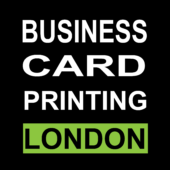Crafting an Effective Business Card for Your Small Business
A business card is more than just a piece of paper with your contact information; it is a vital marketing tool that can make a lasting impression on potential clients and partners. For small businesses, creating a memorable and effective business card is crucial in establishing brand identity and fostering connections. This article will guide you through what to include on your business card to ensure it effectively represents your business and leaves a positive impact.
Essential Elements
- Business Name and Logo: Your business name should be prominently displayed. If you have a logo, it should be included to enhance brand recognition. The logo should be professionally designed to reflect the essence of your business and to help it stand out.
- Your Name and Title: Include your full name and job title. This personalizes the card and lets the recipient know who they will be contacting. It also adds a level of professionalism and credibility.
- Contact Information: The main purpose of a business card is to provide your contact details. This should include:
- Phone Number: Ensure it’s a number where you can be reached during business hours.
- Email Address: Use a professional email address that is easy to remember.
- Website: Include your business’s website for more information.
- Physical Address: If you have a physical location that clients can visit, include it. This is particularly important for retail or service businesses.
- Social Media Handles: In today’s digital age, social media presence is important. Include handles for platforms relevant to your business. This not only shows that you are active online but also offers another avenue for clients to reach you.
- Tagline or Brief Description: A short tagline or description can convey what your business is about at a glance. This should be concise and impactful, summarizing the core of your business in a few words.
Design Considerations
- Simplicity and Clarity: Avoid cluttering your business card with too much information or overly complex designs. A clean, simple layout is more effective and easier to read. Stick to a legible font and maintain sufficient white space.
- High-Quality Materials: Invest in good quality paper and printing. A sturdy, well-printed business card feels more professional and durable. Consider using matte or glossy finishes depending on the look you want to achieve.
- Consistent Branding: Your business card should reflect your brand’s color scheme, fonts, and overall aesthetic. Consistency in branding helps in building brand recognition and trust.
- Unique Features: To make your card stand out, you might consider unique features like embossing, foil stamping, or using unconventional shapes. However, ensure that these elements do not overshadow the essential information.
Optional Elements
- QR Code: Including a QR code can direct clients to your website or portfolio with a quick scan. This can be especially useful for tech-savvy clients.
- Secondary Contact Methods: If you frequently use other methods of communication like WhatsApp or Skype, including these can be beneficial.
- Industry-Specific Information: Depending on your industry, you might include certifications, licenses, or a professional photo, especially if personal branding is crucial.
Conclusion
A well-designed business card is an indispensable tool for small businesses, serving as a tangible reminder of your brand and a convenient means of contact. By including essential elements such as your business name, logo, contact information, and social media handles, and by paying attention to design considerations like simplicity, material quality, and branding consistency, you can create an effective business card that leaves a lasting impression. Optional features like QR codes and unique design elements can further enhance its impact. Remember, your business card is often the first impression potential clients will have of your business—make it count.
